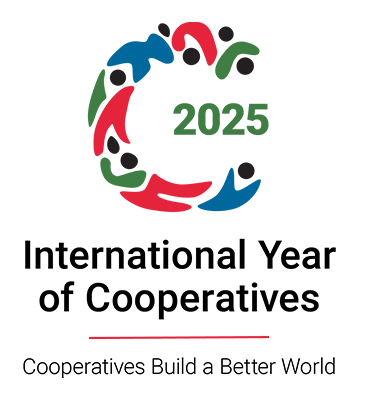Filter
HIV stands for Human Immuno-deficiency Virus. HIV after entering the human body gradually destroys the immune system, i.e. the ability to fight infections/diseases.
AIDS stands for Acquired Immune Deficiency Syndrome. It is the later stage of HIV infection. It is a condition in which a group of symptoms appear as the immune system becomes very weak. It can take around 8-10 years from the time of HIV infection to the stage of AIDS. HIV infected people can lead symptom–free and productive lives for years.
No. Being diagnosed with HIV does not mean a person will also be diagnosed with AIDS. Healthcare professionals diagnose AIDS only when people with HIV infection begin to get severe opportunistic infections (OIs), or their CD4cell counts fall below a certain level.
.HIV can be transmitted through: Unprotected sex with an HIV infected person; Transfusion of HIV infected blood or blood products; Sharing of needles contaminated with HIV infected blood; and from HIV infected mother to her baby – during pregnancy, during birth or after delivery through breast milk.
Apart from the above modes of transmission, HIV doesn’t spread by any other way, HIV doesn’t spread through ordinary social contact; for example by shaking hands, traveling in the same bus,
HIV generally affects people at the most productive age, leading to premature death thereby severely affecting the socio-economic structure of whole families, communities and countries.
Secondly, HIV infection goes unnoticed in the initial years because it is not symptomatic in the initial phase. Thus, early detection, treatment and management get tough. This is the reason why HIV/AIDS are often called a silent killer.
A considerable amount of stigma and discrimination is associated with AIDS, which creates hindrance in prevention as well as care and support efforts.
And, because HIV spreads mostly through sexual contact which being very personal and private affair, it becomes difficult to address it.
A risk of HIV transmission does exist if instruments contaminated with blood are either not sterilized or disinfected or are used inappropriately between clients. It is recommended that instruments that are intended to penetrate the skin be used once, then disposed of or thoroughly cleaned and sterilized.
Personal service workers who do tattooing or body piercing should be educated about how HIV is transmitted and take precautions to prevent transmission of HIV and other blood-borne infections in their settings. If you are considering getting a tattoo or having your body pierced, ask staff at the establishment what procedures they use to prevent the spread of HIV and other blood-borne infections, such as hepatitis B virus.
At the start of every intravenous injecting episode, blood from the vein is drawn in for confirmation and thus blood is introduced into needles and syringes. HIV is present in large quantity in the blood of a person infected with the virus. The reuse of a HIV infected blood -contaminated needle or syringe by another drug injector (sometimes called "direct syringe sharing" has some quantity of the HIV infected blood present in the hollow of the needle and the base of the syringe cylinder. Hence the reuse of such needles and syringes carry high risk of HIV transmission or any other blood borne virus when pushed into the blood stream of the next user.
In addition, using some unsterilised medical equipment can pose a risk of spreading HIV.
"Street sellers" of syringes may repackage used unsterilised syringes and sell them as sterile syringes. For this reason, people who continue to inject drugs should obtain syringes from reliable sources of sterile syringes, such as pharmacies and NGOs implementing IDU-Targeted Intervention under NACP. It is important to know that sharing a needle, syringe or any other injecting paraphernalia for any use, including skin-piercing and injecting steroids, can put one at risk for HIV and other blood-borne infections.
Yes, it is possible for either sex partner to become infected with HIV during anal sex. HIV can be found in the blood, semen, pre-seminal fluid, or vaginal fluid of a person infected with HIV virus. In general, the person receiving the semen is at greater risk of getting HIV because the lining of the rectum is thin and may cause tear of anus and penis thus may allow the HIV virus to enter the body during anal sex. However, a person who inserts his penis into an infected partner also is at risk because HIV can enter through the urethra (the opening at the tip of the penis) or through small cuts, abrasions, or open sores on the penis.
Having unprotected (without a condom) anal sex is considered to be a very risky behavior. If people choose to have anal sex, they should use a latex condom. Most of the time, condoms work well. However, condoms are more likely to break during anal sex than during vaginal sex. Thus, even with a condom, anal sex can be risky. A person should use a water-based lubricant in addition to the condom to reduce the chances of the condom breaking.
Studies have shown that latex condoms are highly effective in preventing HIV transmission when used correct and consistently. These studies looked at uninfected people considered to be at very high risk of infection because they were involved in sexual relationships with HIV-infected people. The studies found that even with repeated sexual contact, majority of those people who used latex condoms correctly and consistently did not become HIV infected.
By abstaining from sex; or By having a mutually faithful monogamous sexual relationship with an uninfected partner; or By practicing safe sex (Safe sex involves the correct use of a condom during each sexual encounter and also includes non-penetrative sex.
If within 72 hours since the condom broke, you may be able to take medication that could keep you from getting infected with HIV, even if your partner is HIV-positive. Call your doctor or your local health department immediately and ask about Post-Exposure Prophylaxis, or PEP. If it’s been longer than 72 hours, PEP will not protect you from HIV, and you will need to explore HIV testing options. In most cases, you will have to wait at least 6 weeks after a possible exposure before an HIV test can provide accurate results Window Period).
An HIV-infected mother can infect the child in her womb through her blood. The baby is more at risk if the mother has been recently infected or is in an advanced stage of AIDS.
Transmission can also occur at the time of birth when the baby is passing through the mother’s genital tract. Transmission can also occur through breast milk.
Yes. The virus has been found in the breast milk in low concentrations and studies have shown that, 10 to 15% children born to HIV-infected mothers can get HIV infection through breast milk. Breast milk, however, has many substances in it that protect an infant’s health. The benefits of breast-feeding for both mother and child are well recognized and as effective ARV drugs are available, it is now recommended to all HIV positive mothers to continue breastfeed their infant.
Donor's responsibility: Only healthy persons must enrol as blood donors. Anyone at risk for HIV/ AIDS or already positive for HIV or other TTI should permanently defer himself from donating blood. In case a person at risk donates blood at the blood bank or in a blood donation camp, he can ask the blood bank staff to exclude his unit for transfusion using the provision of "Confidential Unit Exclusion". For details, refer to the Guidelines on Blood Donor Counseling of NACO/NBTC.
Blood Bank's responsibility: Blood Bank should select only healthy persons from low risk population to donate blood. All donated blood units must be screened for five Transfusion Transmitted Infections (TTI), ie HIV, HBV, HCV, Malaria and Syphilis in accordance to the provisions in the Drugs and Cosmetics Act and rules thereof. Though the Blood Bank conducts mandatory screening for these five infections, there is a small chance especially among multi-transfused patients of getting blood borne infection due to blood donation during window period. This risk can be minimized through phase out of replacement blood donation and increasing reliance on Repeat Voluntary non-remunerated Blood Donors. NBTC now encourages the use of higher technologies like Fourth Generation ELISA, CLIA and NAT for enhancing the sensitivity of blood screening for donated blood. Adequate stocks of safe tested blood must be available with the blood bank in accordance to requirements.
Clinician's responsibility:Blood or blood components must be prescribed only when actually indicated and transfused only when absolutely necessary. Guidelines for appropriate clinical use of blood/ components must be followed, with proper bedside practices and documentation. Blood and Blood Components should only be sourced from licensed blood banks/ approved blood storage centres.
Recipient's responsibility:Blood and Blood Components should only be sourced from licensed blood banks/ approved blood storage centres and transfused only with a proper medical prescription and supervision of a Registered Medical Practitioner.
he normal HIV blood tests detect the presence of antibodies in human body, which take about 6-12 weeks (upto 6 months in some cases) after infection to form in the body in detectable quantity. This period is called the window period. During this period the HIV status does not show in the test but the person can infect others.
HIV is not casually transmitted, so kissing on the cheek is very safe. Even if the other person has the virus, your unbroken skin is a good barrier. No one has become infected from such ordinary social contact as dry kisses, hugs, and handshakes.
Open-mouth kissing is considered a very low-risk activity for the transmission of HIV. However, prolonged open-mouth kissing could damage the mouth or lips and allow HIV to pass from an infected person to a partner and then enter the body through cuts or sores in the mouth. Because of this possible risk, the CDC recommends against open-mouth kissing with an infected partner.
HIV is found only in body fluids, so you cannot get HIV by shaking someone’s hand or giving them a hug (or by using the same toilet or towel). While HIV is found in saliva, sharing cups or utensils has never been shown to transmit HIV.
No, Insects cannot transmit HIV. Research has shown that HIV does not replicate or survive well in insects. HIV does not reproduce or live in the mosquito’s saliva. HIV is a fragile virus that does not live outside the human body.
Yes. Sexually Transmitted Infection (STI) can increase a person's risk of becoming infected with HIV five to eight times more. The STI causes ulcers or discharge from genitalia, STI increases the chance of acquiring and transmitting the chance of HIV infection.
If the Sexually Transmitted infection causes irritation or ulcer of the skin, it makes it easier for HIV to enter the body during sexual contact. Even when the STI causes no breaks (discharge) or open sores, the infection can stimulate an immune response in the genital area that can make HIV transmit more easily.


 Delhi State AIDS Control Society
Delhi State AIDS Control Society 


